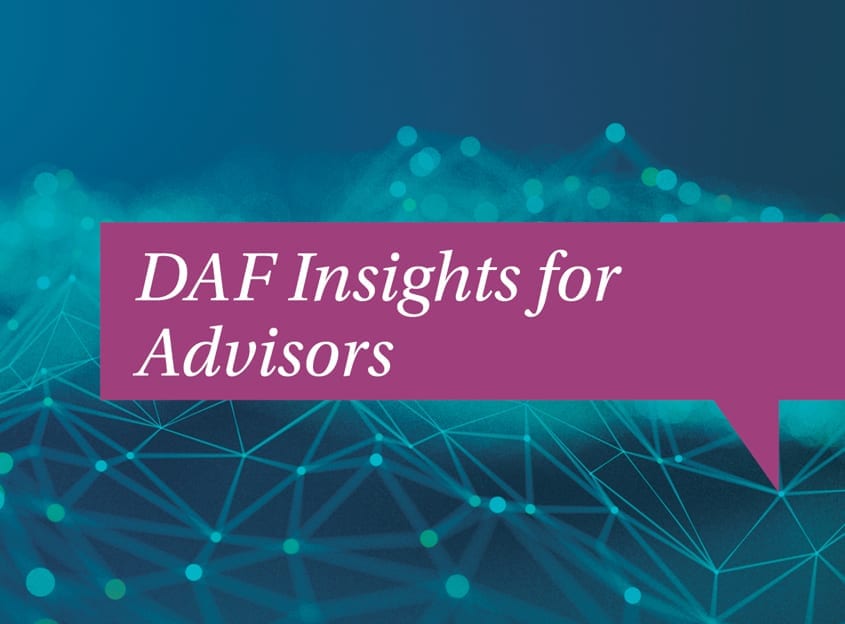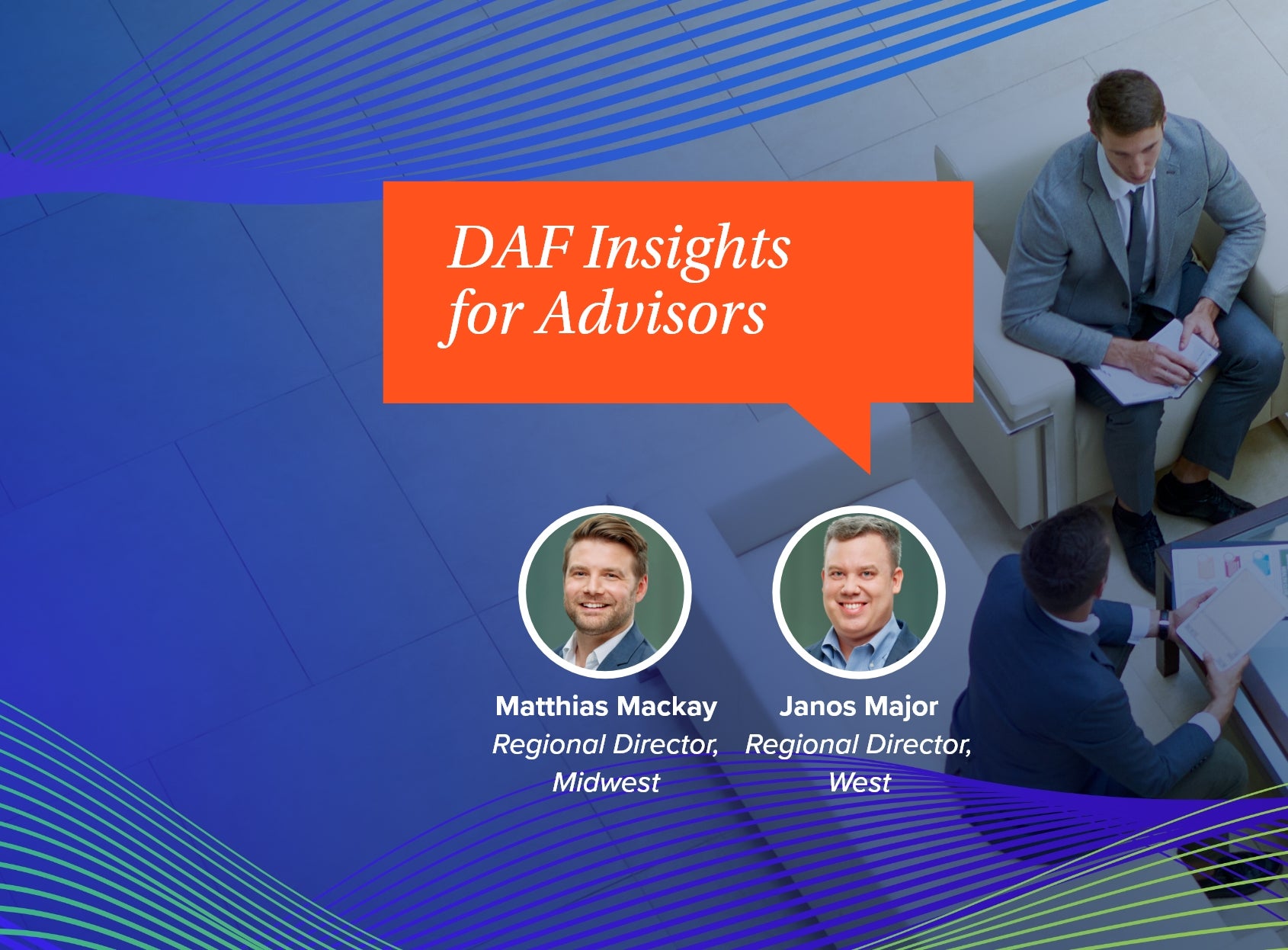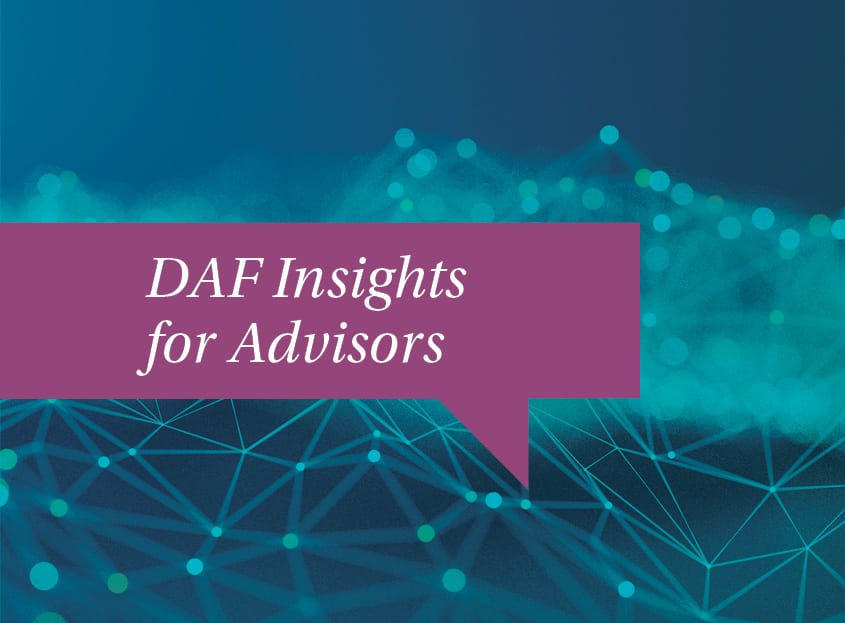Three Key Moments to Talk to Clients about DAFs

Setting up and contributing to a donor-advised fund (DAF) can give your clients a sense of pride and even boost their interest in charitable giving. But your conversation with clients around giving is just getting started. Now that you have a giving tool in place, it’s up to you to follow up. Here are some key moments when you should talk with clients about how to get the most out of their DAFs on an ongoing basis:
1. The annual review. At a minimum, most financial advisors see clients yearly to learn if their goals or situation has changed and to assess the portfolio’s performance. During this meeting, ask your clients about their giving plans. For instance, your clients may have discovered a new cause they want to support. Make sure you focus first on the client’s interests and passions. Next, review the allocation and performance of investments in the DAF. If the client is getting ready to make a major gift, for instance, it may be time to shift more money into cash. If the fund is getting low and the client is making repeat donations, a new contribution to the DAF may make sense. Then it’s time to look at assets that are good candidates to donate.
2. Special situations. Throughout the year, any number of events could affect your clients’ giving plans and prompt a new conversation:
Your client may experience a sudden change in income. A client may have a significant income spike one year due to a bonus or the sale of a business. To reduce taxes and set aside gifts for subsequent years, clients may want to make an increased DAF contribution.
Your client decides to retire a few years early and wants to pre-fund charitable giving. Just as clients save for spending goals in retirement, they may want to save for giving goals. By making contributions to a DAF while they are working and possibly in a higher tax bracket, their charitable deduction could be more valuable.
Your client decides to itemize deductions this tax year. With the increase in the standard deduction, many taxpayers are practicing “bundling,” in which they group deductions into a single year to surpass the itemization threshold. Clients who pursue this practice may want to make a large contribution, covering multiple years of grantmaking, to their DAF one year and hold off the following year.
Your client would like to donate a complex, illiquid asset. This could include privately held company stock, part of a family business, artwork, real estate, pre-IPO shares and more. Many charities aren’t equipped to handle complex gifts, but DAF sponsors like NPT have the expertise to meet this challenge.
3. Estate planning meeting. Whether your clients will exceed the $11.4 million estate tax exemption or not, they can save money by contributing to a DAF now, taking an income tax deduction and advising the DAF to distribute the gift upon death. If they wish to set up an endowed gift, their successors or the DAF sponsor can carry out their giving plan for generations.
NPT does not provide legal or tax advice. This blog post is for informational purposes only and is not intended to be, and shall not be relied upon as, legal or tax advice. The applicability of information contained here may vary depending on individual circumstances.
Coming Next (Sept. 19): Donating Pre-IPO Shares to a Donor-Advised Fund
To download a PDF of this blog post, click below:


